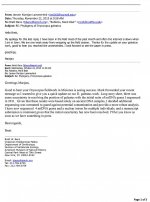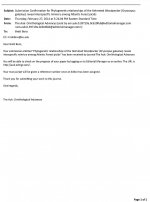We submitted our sequences to Genbank once our paper was accepted. We had no knowledge of the contents of the Benz et al. manuscript or that is was forthcoming. We worked on a phylogeny with samples from live captured Helmeted Woodpeckers, whereas Benz at al. sequenced from toe pads from museum specimens. It is great that the two independent studies have the same overall result and classification recommendation. Regarding Laurent´s question about the different topologies within Celeus, this may be due to different genes having been sequenced and these giving different signals.
Greetings Folks. I wish my first post on this forum could be on a more positive note, but I feel that I need to set the record straight with respect to our Helmeted Woodpecker study that is currently in press at
The Auk: Ornithological Advances.
I began the molecular lab work for this project in 2011, shortly after completing the Benz and Robbins study on
Celeus species limits. We exchanged multiple e-mails with Lammertink from 2011 to 2013 to provide him updates while sequencing and analyses were ongoing. Once we were satisfied with the results, we informed Lammertink that we would soon be submitting our manuscript and we would let him know when we had something in press. See attached email correspondence from Lammertink dated November 21, 2013.
We first submitted our paper to The Auk on February 27, 2014. See attached submission confirmation from the Auk dated 2-27-14.
Due to my heavy field schedule in 2014 (multiple expeditions in Papua New Guinea), my co-authors and I were unable see the paper through the revision process as fast as we would have liked. Moreover, two of the 4 reviewers had difficulty in fully grasping the ISDM mechanism, as did an associate editor, but once the Prum 2014 ISDM review paper came out during our second round of reviews, this helped dispel some of the skepticism around the mimicry hypothesis that we develop in the paper. Ultimately, our paper was accepted on July 31, 2015.
Incidentally, my co-authors and I first learned of the Lammertink study on July 31, when news of their abstract began to circulate on the internet. Needless to say, we were quite shocked and disappointed, particularly given their study is heavily based on the sequences we generated in our 2011
Celeus study, yet they fail to make mention of this in their paper or contact us to let us know they were proceeding with their study. I'll leave it up to the forum members to decide whether such behavior is ethically professional or not.
The good news is that we now know the true phylogenetic position of
galeatus, and with the Prum's theoretical framework for examining potential cases of ISDM, we can now begin to test hypotheses of competitive mimicry in a more robust manner.
respectfully,
Brett Benz







